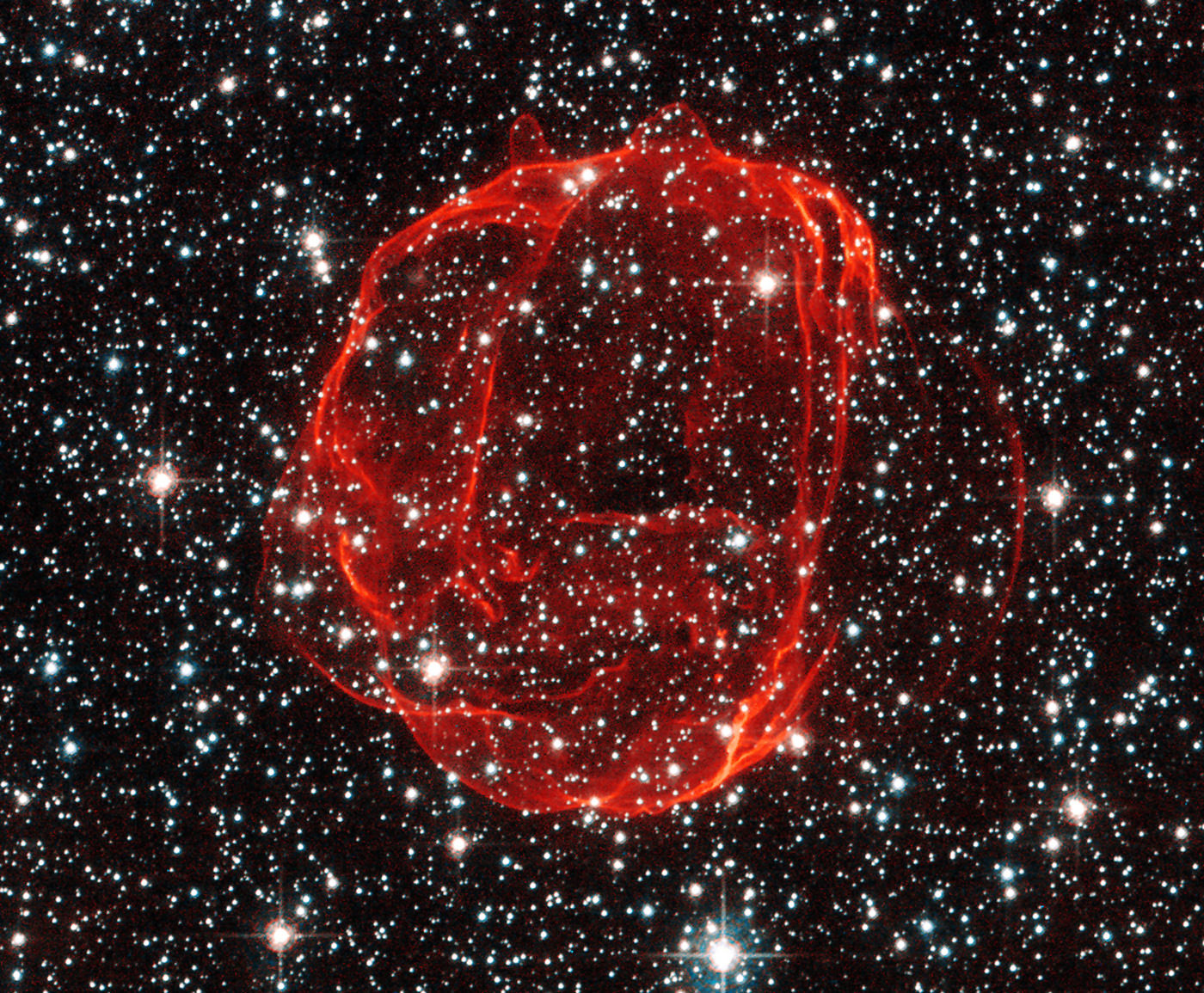Stars like our Sun can last for a very long time (in human terms, anyway!) somewhere in the neighborhood of 10-12 billion years. Already over 4.6 billion years old, the Sun is entering middle age and will keep on happily fusing hydrogen into helium for quite some time. But eventually even stars come to the end of their lives, and their deaths are some of the most powerful — and beautiful — events in the Universe.
The wispy, glowing red structures above are the remains of a white dwarf in the neighboring Large Magellanic Cloud 150,000 light-years away. Supernova remnant SNR 0519 was created about 600 years ago (by our time) when a star like the Sun, in the final stages of its life, gathered enough material from a companion to reach a critical mass and then explode, casting its outer layers far out into space to create the cosmic rose we see today.
As the hydrogen material from the star plows outwards through interstellar space it becomes ionized, glowing bright red.
SNR 0519 is the result of a Type Ia supernova, which are the result of one white dwarf within a binary pair drawing material onto itself from the other until it undergoes a core-collapse and blows apart violently. The binary pair can be two white dwarfs or a white dwarf and another type of star, such as a red giant, but at least one white dwarf is thought to always be the progenitor.
Read more: A New Species of Type Ia Supernova?
A recent search into the heart of the remnant found no surviving post-main sequence stars, suggesting that SNR 0519 was created by two white dwarfs rather than a mismatched pair. Both stars were likely destroyed in the explosion, as any non-degenerate partner would have remained.
This image was chosen as ESA/Hubble’s Picture of the Week. See the full-sized version here.
Credit: ESA/Hubble & NASA. Acknowledgement: Claude Cornen

